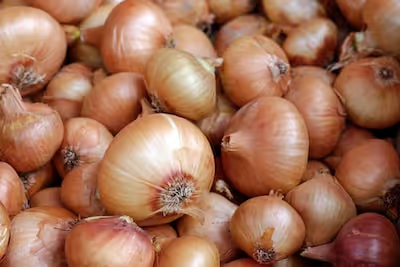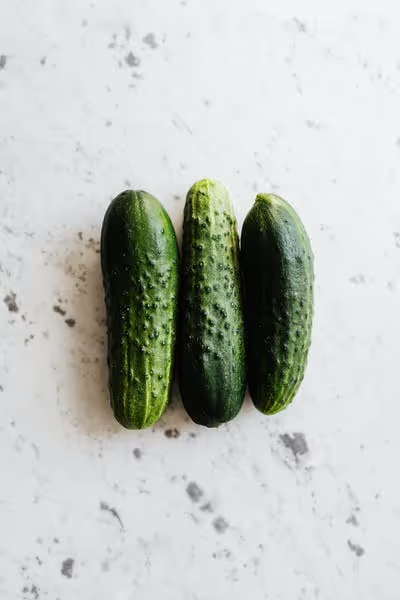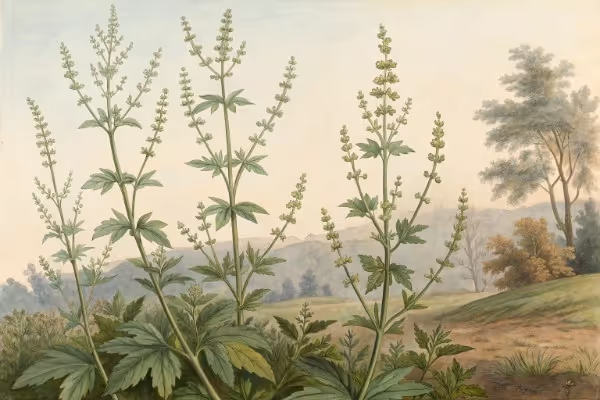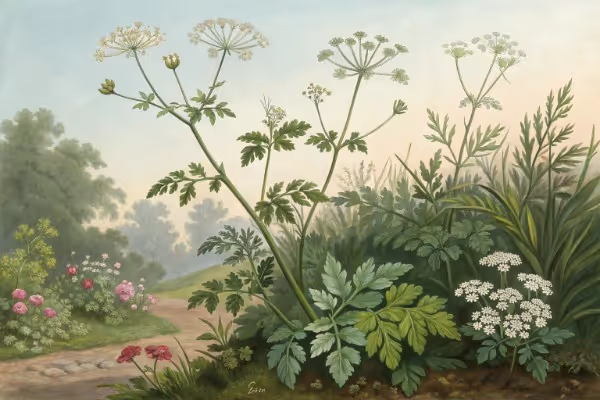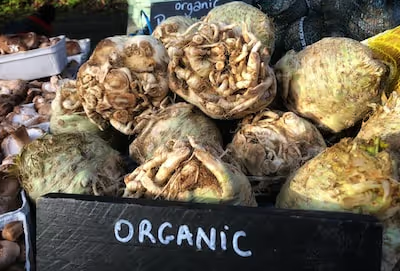Growing Cherry Tomatoes: How to Plant, Grow, and Harvest

Growing Cherry Tomatoes
Growing cherry tomatoes starts with healthy seedlings, full sun, and rich soil. Choose a sunny spot with at least six hours of direct sunlight daily, and plant seedlings deep to encourage sturdy root growth. Water consistently, stake them early, and you'll have tangy-sweet gems popping fresh from the vine all summer. Ready to savor the art of homegrown tomatoes? Let's plant.
Cheatsheet: Quick Guide to Thriving Cherry Tomatoes
🌱 Choose & Start Seeds
- Indeterminate types give months of fruit.
- Start seeds indoors 6-8 weeks before last frost.
- Use seed trays, warm (70-80°F / 21-27°C).
- Thin to strongest seedling per cell.
🪴 Transplant & Site
- Transplant after soil warms to 60°F (16°C); no frost risk.
- Pick full sun (6+ hrs) spots. Space 24 in. (60 cm) apart.
- Mix compost into planting hole.
- Plant deep; bury lowest leaves.
💧 Water & Feed
- Keep soil evenly moist; drip irrigation best.
- Water early; avoid wet leaves.
- Side-dress with organic fertilizer every 2-3 weeks.
⚖️ Support & Prune
- Stake/cage at planting.
- Prune suckers for airflow, larger fruit.
🐛 Guard Against Pests & Disease
- Rotate crops yearly.
- Use mulch; prevent splash-up and weeds.
- Scout for aphids, hornworms, blight. Remove by hand.
🍅 Harvest
- Pick when fruits are fully colored and firm.
- Harvest 60-75 days after transplant.
- Frequent picking increases yield.
🔧 Tools and Products You'll Need
- Hand trowel
- Pruners
- Garden stakes or cages
- Compost
- Balanced organic fertilizer
- Drip irrigation or soaker hose
- Mulch
- Seeds or starter plants
- Plant trays and seed-starting mix
🔬 Nutrition & Self-Sufficiency
- Cherry tomatoes deliver Vitamin C, potassium, antioxidants.
- 1 cup (150g) = 25 cal, 2g fiber, 80% daily C.
- One plant can yield 200+ fruit.
- Start seeds indoors, keep warm (70-80°F / 21-27°C).
- Transplant out after frost; bury stem deep.
- Stake/cage and mulch after planting.
- Water evenly; fertilize bi-weekly.
- Prune for airflow and direct growth.
- Harvest when fruits turn full color.
-
Growing Cherry Tomatoes: How to Plant, Grow, and Harvest
Why cherry types reward disciplined growers
I grow cherry varieties for speed, relentless yields, and flavor that snaps. They forgive small mistakes, yet they pay back careful technique with bowls of fruit every other day.
Know your plant: habit, days, and heat
Indeterminate cherry tomatoes climb like ivy and set fruit until frost, while determinate plants top out and ripen in a shorter window. Expect 55 to 70 days from transplant to first harvest, with peak flavor at 75 to 85 F or 24 to 29 C daytime.
“Tomatoes are self fertile; wind or vibration assists pollen shed.” Royal Horticultural Society
Site and soil that power fruit set
Pick full sun for 8 hours or more and shelter from harsh wind. I prep beds to a depth of 12 inches or 30 cm with compost and a light hand on nitrogen to avoid leafy giants and meager trusses.
Target a soil pH of 6.2 to 6.8 for nutrient uptake and calcium availability. I add a balanced organic base like 3-4-6 at planting, then feed lean to keep sugars high.
“The ideal soil pH for tomatoes is 6.2 to 6.8.” Cornell Cooperative Extension
Starting seeds for a head start
Sow 6 to 8 weeks before last frost at 70 to 80 F or 21 to 27 C, then give bright light to prevent leggy stems. I brush the tops with my palm once a day to beef up stems and cue stronger growth.
Thin to one seedling per cell when first true leaves appear. Begin hardening off 7 to 10 days before planting, with short outdoor stints that build to full days.
Transplant timing and spacing
Plant after frost danger when soil holds at least 60 F or 15.5 C. I bury stems up to the first true leaves to promote extra roots and better drought tolerance.
Space plants 24 to 30 inches or 60 to 75 cm apart in rows 36 inches or 90 cm apart. I stagger rows for airflow that keeps foliar disease at bay.
“Transplant after the danger of frost and when soils are at least 60 F.” University of Missouri Extension
Support systems: cages, strings, and clips
A sloppy vine invites disease and lost fruit, so I train early. Heavy-duty square cages work for determinate types, while indeterminates shine on a vertical string trellis with tomato clips.
Choose one leader for tight spaces, or two leaders for bigger fruit clusters and balance. Remove suckers when small to avoid big wounds and reduce stress.
Water and feeding plan that prevents blossom end rot
Deep, even moisture beats frequent sips. I aim for 1 to 1.5 inches or 25 to 38 mm per week, delivered by drip in the morning.
Side-dress with a low N, higher P and K feed at first bloom, then again two weeks later. Too much nitrogen delays fruit and dilutes flavor.
“Consistent soil moisture helps prevent blossom end rot.” University of California IPM
Mulch and airflow
I mulch with straw or shredded leaves right after transplanting to stop soil splash and conserve water. Keep 2 to 3 inches or 5 to 7.5 cm off the stem to prevent rot.
Pruning the lower 12 inches or 30 cm of foliage improves airflow and cuts early blight pressure. Clean pruners with alcohol between plants.
“Mulching reduces disease by preventing soil from splashing onto leaves.” University of Minnesota Extension
Pollination tricks for heavy clusters
Cherry flowers usually self set, yet a midday shake of the trellis during bloom can lift yields. In damp spells I use an electric toothbrush on the stem near the cluster for reliable pollen shed.
“High daytime temperatures above 90 F and warm nights can reduce fruit set.” Texas A&M AgriLife Extension
Container play: balconies to bumper crops
Use 5 to 10 gallon or 19 to 38 liter pots for compact types, and 15 gallon or 57 liter for rangy vines. I blend high quality peat or coir mix with 10 to 20 percent compost and a slow-release fertilizer charge.
Fabric pots drain fast and keep roots cooler in heat. Water daily in midsummer, sometimes twice on windy days.
Commercial-grade tips that translate to home gardens
- Graft vigorous scions onto disease-resistant rootstock for tired soils.
- Use reflective mulch to bump light into dense canopies and ripen clusters evenly.
- Calibrate irrigation with a simple catch cup test to hit 1 inch or 25 mm per week.
- Train to a single high wire for speed picking and clean fruit.
Pests and disease: integrated tactics that actually work
Aphids and whiteflies yield to a weekly spray of insecticidal soap, plus yellow sticky cards for monitoring. I invite lacewings and hoverflies by planting dill, alyssum, and calendula nearby.
For early blight and septoria, I rotate beds yearly, prune low leaves, and apply a preventative copper or biofungicide at first sign in wet summers. I plant disease-tolerant varieties where pressure runs high.
Tomato hornworms glow under a blacklight at night, which makes hand picking efficient. If I spot white cocoons on a hornworm, I leave it since parasitic wasps are at work.
Flavor science in plain clothes
Sun drives sugars, but steady moisture keeps skins from cracking. I back off water slightly in the final week before a big pick for tighter skins and higher Brix.
A light pinch of seaweed extract at first blush seems to sharpen aromatics in my trials. The sweetest cherries for me hit 8 to 12 Brix on a handheld refractometer.
Harvest and storage that protect texture
Pick when fully colored and slightly soft, then twist off with the cap to slow dehydration. Morning harvests taste brighter and split less.
Store at room temperature for flavor, not in the fridge. If you must chill, bring fruit back to room temp before eating to revive aroma.
Varieties I trust for Growing Cherry Tomatoes
- Sun Gold F1: tangerine skin, tropical tang, 57 days, prolific in heat.
- Black Cherry: deep color, winey finish, strong crack resistance.
- Sweet Million F1: long trusses, balanced acidity, machine-like output.
- Juliet F1: grape type, bulletproof skins, great for drying and sauces.
- Pink Bumble Bee: striped stunner, firm flesh, holds on the counter.
- Tommy Toe: heritage vigor, thrives in humidity, old-school snap.
Comparisons: pick by need
- Heat tolerance: Sun Gold, Juliet, Sweet Million.
- Container champs: Tiny Tim, Tumbling Tom, Red Profusion.
- Crack resistance: Juliet, Black Cherry, Sakura F1.
- Disease package: Mountain Magic F1, Fantastico F1.
Fertilizer short list that keeps plants honest
- Base: organic 3-4-6 or 4-6-4 at planting, 0.5 cup or 120 ml per plant in-ground.
- Bloom boost: fish and kelp 2-3-1 every 10 to 14 days during set.
- Container program: controlled-release prills plus weekly 1-1-2 liquid at half label rate.
Common problems and quick fixes
- Blossom end rot: mulch, even water, avoid heavy ammoniacal N, check pH near 6.5.
- Cracking after rain: pick at first blush before storms, use varieties with thicker skins.
- Leaf curl in heat: shade cloth 20 to 30 percent during heat spikes, water early.
- Flowers drop in heat: shake vines at midday and keep soil moisture steady.
- Pale new growth: check iron availability at high pH, add chelated Fe if needed.
Succession strategy for a nonstop bowl
I plant three waves, two weeks apart, to smooth out weather swings and disease loads. This also staggers peak harvests so I do not drown in fruit on a single weekend.
Season stretchers that actually pay off
Use black plastic or dark fabric to warm spring soil by 3 to 5 F or 1.5 to 3 C. In autumn I drape row cover on hoops at night and keep fruiting to first hard frost.
My field notes that save time
- Label each plant with a paint marker, not pencil, or rain will erase your map.
- Clip trusses before they hit the ground to prevent slugs and soil splash.
- Harvest into shallow trays, single layer, so skins stay pristine.
- Shake blooms after a cool morning warms to 70 F or 21 C for best pollen release.
Numbers that help forecast your haul
A strong indeterminate cherry can yield 8 to 15 pounds or 3.6 to 6.8 kg per plant over a season. With string trellis and weekly pruning, I average 12 pounds or 5.4 kg from Sun Gold in a 20 square foot or 1.9 square meter bed.
Shopping list for Growing Cherry Tomatoes
- Heavy-gauge tomato cages or trellis kit with clips and twine.
- Drip line, pressure regulator, and timer for even moisture.
- Soil test kit to set pH and calcium before planting.
- Organic base fertilizer 3-4-6, liquid seaweed, and compost.
- Mulch: clean straw or shredded leaves.
- Blacklight flashlight for hornworm patrol.
On myths and shortcuts
Epsom salt does not cure blossom end rot, which is about water and calcium supply, not magnesium. Milk sprays do not fix late blight, so lean on resistant cultivars and sanitation instead.
A final harvest rhythm
I pick small bowls every other day at peak, then roast split fruit low and slow for freezer gold. Plants look tired in late summer, yet a tidy prune and one last feed buys another flush before frost.
“Most cherry tomatoes reach harvest 55 to 65 days after transplanting.” Multiple land-grant university variety trials
Frequently Asked Questions About Growing Cherry Tomatoes
What soil type suits cherry tomatoes best?
Cherry tomatoes thrive in rich, well-draining soil enhanced with organic compost. Aim for soil with a pH between 6.0 and 6.8 to provide optimal nutrient availability.
When is the ideal time to plant cherry tomatoes outdoors?
Plant cherry tomatoes outdoors once temperatures consistently remain above 55°F (13°C) overnight. This typically coincides with late spring or early summer, depending on your local climate.
How far apart should cherry tomato plants be spaced?
Allow between 18 and 24 inches (45–60 cm) spacing between plants. Adequate spacing promotes proper air circulation, reduces disease risk, and provides room for healthy growth.
Do cherry tomatoes require support or cages?
Yes, including a support system such as stakes, cages, or trellises helps keep plants upright, eases harvesting, and prevents damage to fruit and foliage.
How often should cherry tomato plants be watered?
Provide steady moisture by watering deeply once or twice per week, delivering approximately 1–2 inches (2.5–5 cm) of water. Adjust frequency according to rainfall and soil dryness.
What sunlight conditions do cherry tomatoes need?
Cherry tomatoes produce best fruit yields with full sun exposure. Aim to provide at least 6–8 hours of direct sunlight daily.
When are cherry tomatoes ready for harvest?
Cherry tomatoes mature about 60–75 days after transplanting. Ripe tomatoes display vibrant, uniform color and feel slightly soft to the touch.
Growing cherry tomatoes rewards patience and a bit of dirt under your nails. Start with rich soil, steady sun, and a sturdy support. Water deep—don’t just sprinkle—and pinch off suckers for bigger, sweeter fruit. Watch for pests, but don’t overthink it. Pick them when they’re glossy and give just a little. You’ll taste the difference between something grown with care and what you find in a plastic clamshell. If you’re curious about expanding your tomato know-how, check out this guide on how to plant tomatoes. In the end, growing cherry tomatoes is simple: feed the soil, trust the sun, and let nature show off. That first bite—still warm from the vine—makes it all worth it.
Pro Tips for Organic Cherry Tomato Success
Boost Yield with Companion Planting
- Basil: Improves flavor, repels aphids, whiteflies, hornworms.
- Marigolds: Deter nematodes, aphids, and attract beneficial insects.
- Borage: Enhances tomato growth, attracts pollinators, repels hornworms.
- Carrots: Loosen soil, improve root aeration for tomato health.
Sustainable Fertility Practices
- Comfrey Tea: Steep leaves for nutrient-rich liquid feed, high in potassium.
- Eggshells: Add crushed eggshells to planting hole for calcium, ward off blossom-end rot.
- Epsom Salts (Magnesium Sulfate): Dissolve 2 tablespoons per gallon (15 grams per 3.8 liters); apply monthly for greener foliage, better fruit set.
Preventive Organic Pest Control
- Neem Oil: Dilute 1 tablespoon (15 ml) per quart (950 ml) water, spray every 10 days to repel pests, prevent fungal infections.
- Beneficial Insects: Release ladybirds, lacewings, and parasitic wasps to naturally manage aphids, caterpillars, and hornworms.
- Diatomaceous Earth: Sprinkle lightly around plants to ward off crawling pests; reapply after rain.
Enhance Nutritional Benefits with Optimal Harvesting
Harvest cherry tomatoes at vibrant color stage; fruits ripened on-vine contain up to 20% more lycopene and vitamin C compared to early-picked fruit, increasing antioxidant benefits and nutrient density.
Extend Harvest with Succession Planting
Stagger cherry tomato plantings every three weeks in early-mid summer; continuous harvests ensure fresh tomatoes well into late-season, improving household food self-sufficiency.
Find out which plants will thrive in your garden!
Answer a few fun questions and get custom plant recommendations perfect for your space. Let’s grow something amazing together!

start your season
